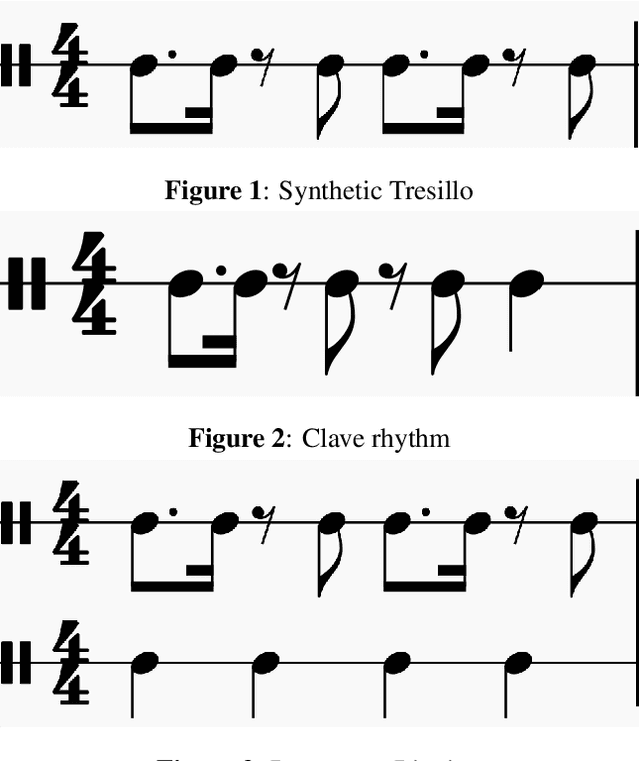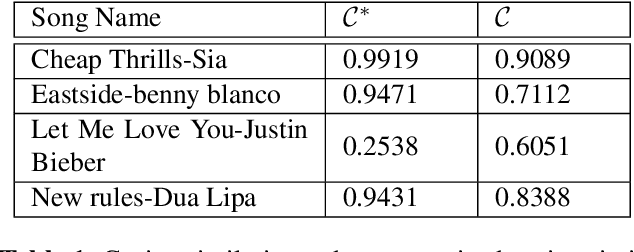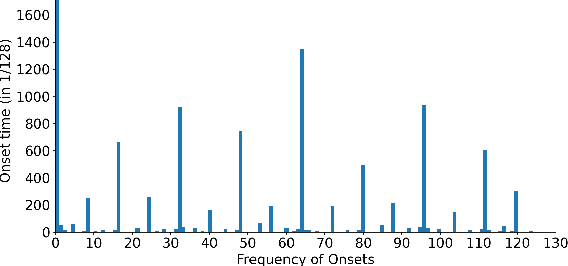Aurel Mäder
Towards a computational definition of the tresillo rhythm and its tracing in popular music
Sep 21, 2021



Abstract:This paper discusses the use and popularity of a rhythm, which henceforth is referred to as "Tresillo rhythm". We first define and formalizes the Tresillo rhythm. Given a mathematical representation of the rhythm, it is then traced in the US Billboard Top 20 Charts of the last 20 years. To detect and determine the use of this rhythm in a song, we compute the similarity of a song with this rhythm. The calculated similarity, then indicates how similar the rhythm of a pop song is compared to the prior defined Tresillo rhythm. To assert and cross-validate the computer rhythm similarity, two different formalizations of the Tresillo rhythm have been compiled and several different approaches to calculated rhythm similarities have been tested and compared. This similarity measure is then used to do an empirical study on the usage of the Tresillo rhythm in the US Billboard Top 20 Charts of the past 20 years (1999-2019). Finally, we argue about some of the possible reasons for the observed trend.
 Add to Chrome
Add to Chrome Add to Firefox
Add to Firefox Add to Edge
Add to Edge